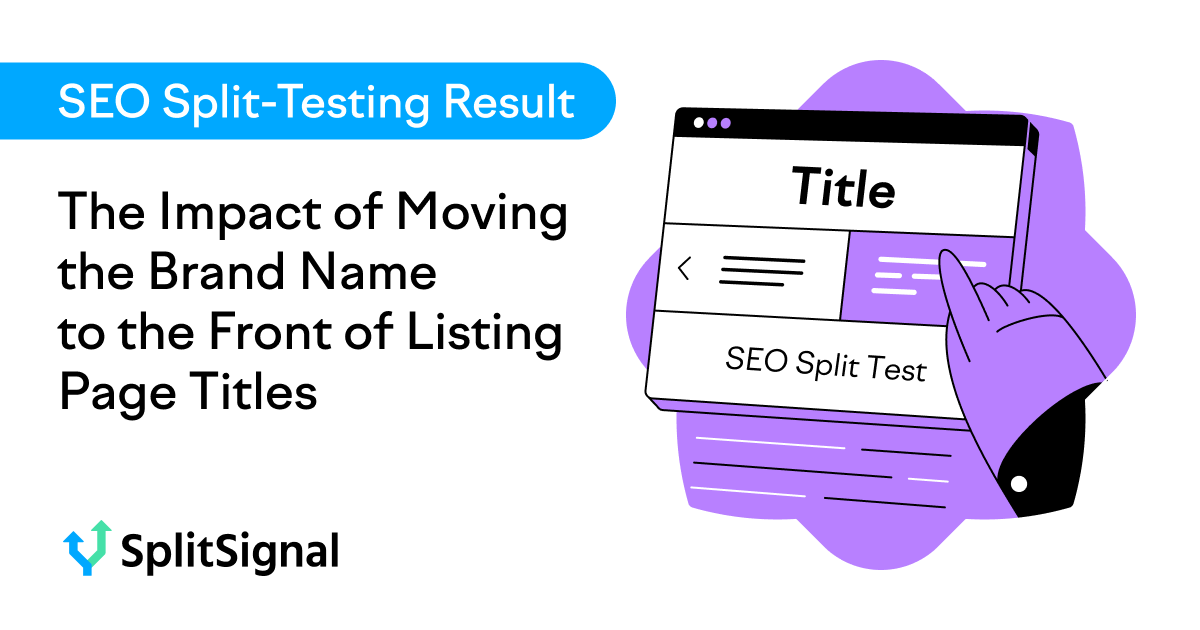Before you start: if you’re unfamiliar with the principles of statistical SEO split-testing and how SplitSignal works, we’re suggesting you start here or request a demo of SplitSignal.
First, we asked our Twitter followers to vote:
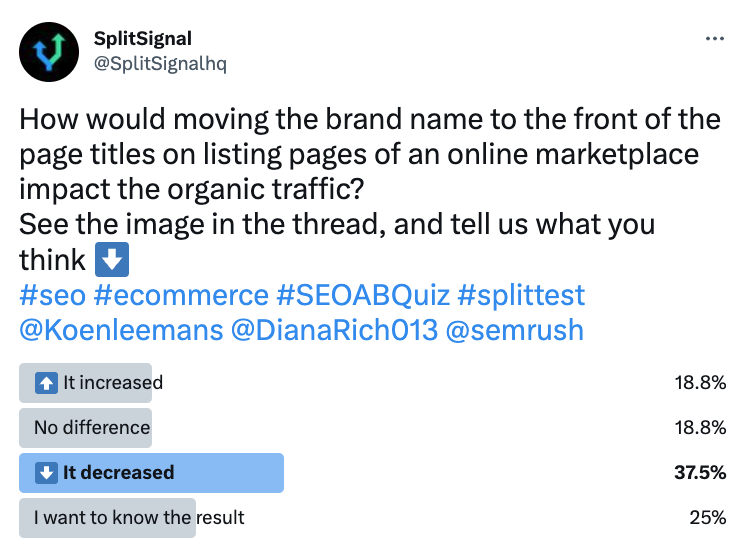
This time the majority of our followers were RIGHT! Read further to find out why.
The Case Study
Title tags play a crucial role in on-page SEO, as they help search engines comprehend the content and relevance of a webpage in relation to a user’s search query. Furthermore, title tags influence a web page’s click-through rate due to their visibility in search results, allowing users to assess the content and intent of the page. To optimize their effectiveness, title tags should be clear, concise, and captivating. An expertly crafted page title can enhance your page’s ranking in search results and boost the probability of users clicking on your page.
When creating page titles, various strategies can be utilized to maximize their impact. The prominence of a brand name in the title tag is particularly vital for established and trusted businesses, as it can strengthen credibility and recognition. Nevertheless, incorporating the primary keyword is equally important for SEO, as it directly corresponds to user search queries and affects search engine rankings. Striking a balance between the placement of the brand name and the primary keyword in a title tag can be challenging but is essential. Depending on the specific objectives and brand recognition, options such as front-loading the brand or the keyword should be considered.
To assess the effectiveness of front-loading the brand name in the title tag, we conducted a test on an online marketplace that specializes in software applications. The primary objective of this experiment was to determine whether positioning the brand name at the beginning of the title tag would result in increased organic traffic to their listing pages.
The Hypothesis
The website’s title tags front-loaded the primary keyword in the current setup, with the brand name following. While potentially beneficial in emphasizing the keyword’s relevance to user search queries, this approach might have impacted the brand’s visibility and recognition in search results.
The subject of this experiment is a reputable and well-recognized brand in the industry. The hypothesis proposed that front-loading the brand name in the title tag would positively impact the SEO performance of their category listing pages.
The motivation behind this test was to gain a deeper understanding of the importance of leveraging branding and to evaluate the brand’s perception within the local market. This information could prove invaluable in guiding future strategies for optimizing title tags and enhancing overall SEO performance.
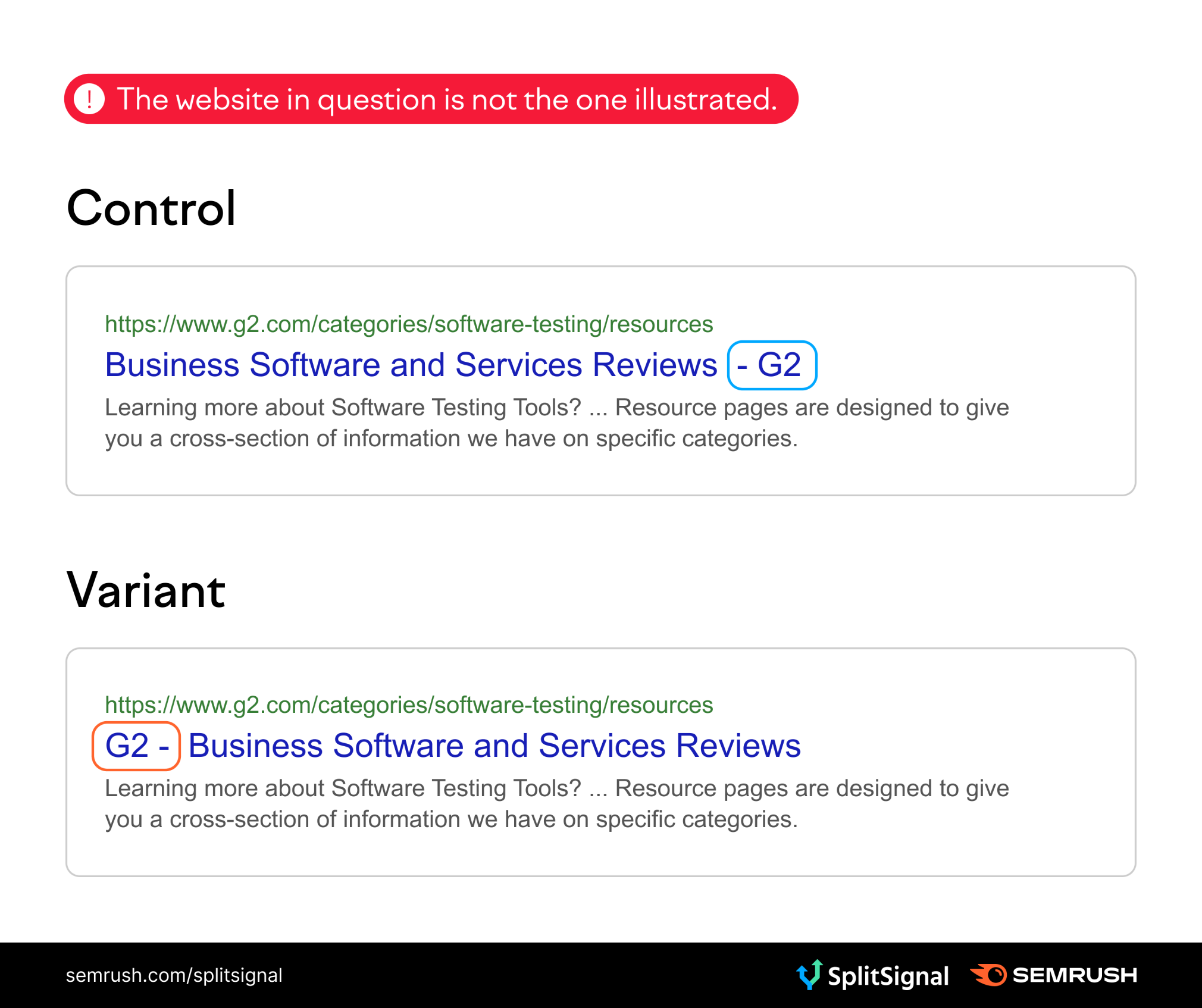
The Test
To put our hypothesis to the test, we used SplitSignal to execute the title tag modifications on a sample of category listing pages.
Approximately 200 category listing pages were selected as either the variant or control group in the experiment. The test spanned 30 days, throughout which we observed that Googlebot visited all of the tested pages, ensuring a comprehensive assessment of the changes implemented.
The Results
The results of the experiment revealed that front-loading the brand name in the title tags of the category listing pages led to an estimated -6.7% decrease in clicks on the tested pages. This finding was statistically significant at the 95% confidence level, indicating that the negative impact on organic traffic to the listing pages could be confidently attributed to the changes made to the title tags.
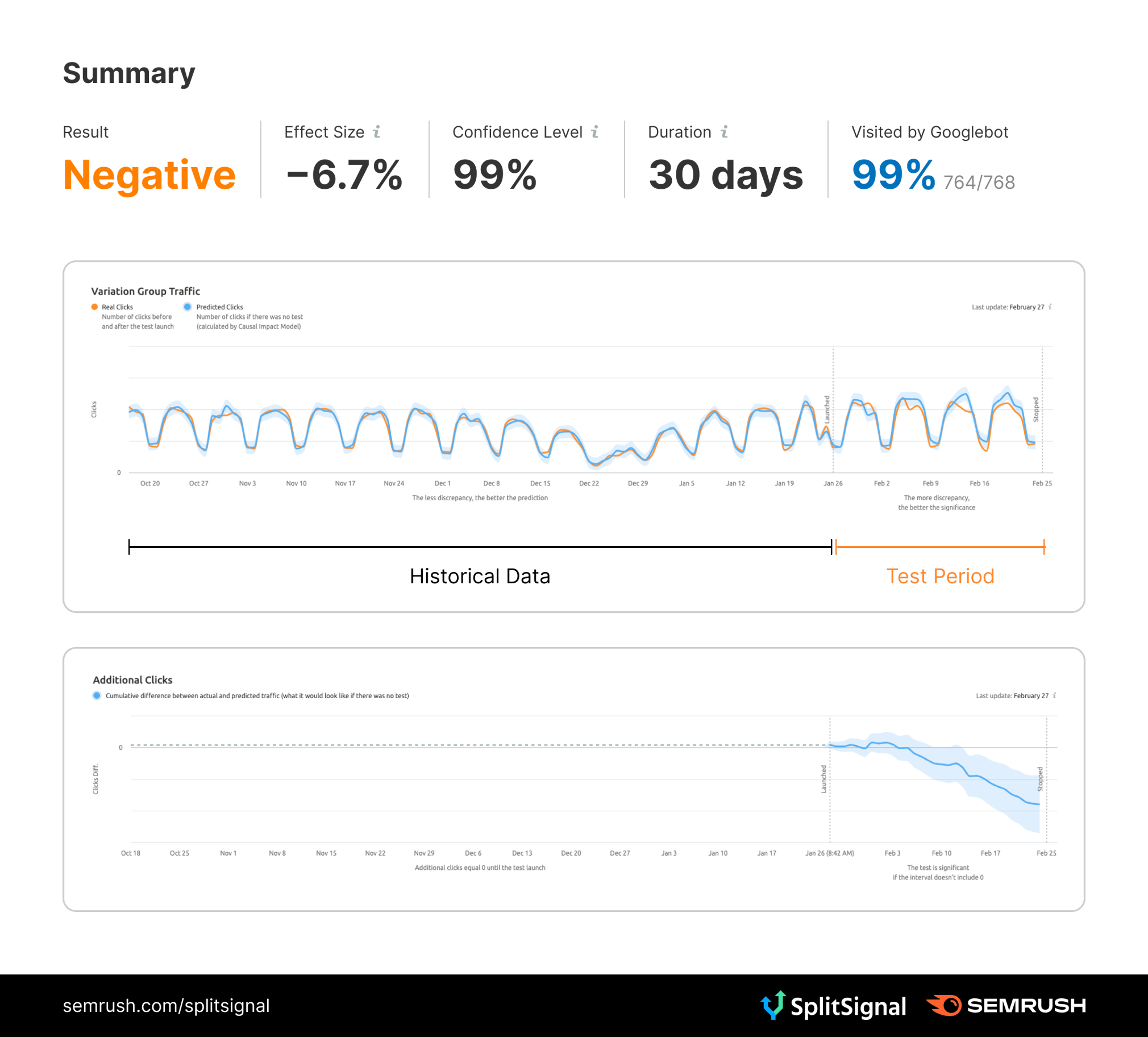
When the blue shaded area performs below or above the x=0 axis, it signifies that the test has reached statistical significance at the 95% level. In this case, we can confidently conclude that front-loading the brand name on the listing pages has a detrimental effect on organic traffic to the listing pages of the website.
We are not comparing the actual control group pages to our tested pages but rather a forecast based on historical data. The model predicts the counterfactual response that would have occurred had no intervention taken place. We compare this with the actual data. We use control pages to give the model context for trends and external influences. If something else changes during our test (e.g., seasonality), the model will detect and take it into account. By filtering these external factors, we gain insight into the true impact of an SEO change.
Why
The test results demonstrated that front-loading the brand name in the title tags of category listing pages led to a decrease in organic traffic to the tested pages of the website. But why did this approach underperform compared to the previous strategy of front-loading the primary keyword in the title tags?
Several factors may have contributed to the negative impact observed in the experiment. One key aspect is that by not front-loading the primary keyword, the website’s search results might not have aligned as closely with users’ search intent or the search engine’s perception of relevance in relation to the search query. This could have led to a diminished ranking in search results, consequently affecting organic traffic.
Additionally, search results are inherently competitive, as users are presented with multiple options. If a particular result does not meet a user’s expectations or desires, they can easily opt for an alternative. In this case, front-loading the brand name might have compromised the immediate visibility of the primary keyword, making it less appealing to users. As a result, users may have chosen other search results that better matched their intent, leading to the observed decrease in clicks.
It’s also possible that the tested website’s target audience places a higher emphasis on the primary keyword than the brand name when selecting. In such instances, front-loading the brand name could have inadvertently reduced the perceived relevance of the listing pages, causing users to gravitate towards alternative search results that appeared more in line with their needs.
Further analysis using the SEO A/B test analyzer on organic impressions corroborates these findings. The analysis revealed that the test negatively impacted impressions, with a decrease of approximately 2%. However, given the more substantial decrease in clicks, it’s highly probable that the modified page titles did not align with user expectations, thereby affecting the click-through rate of the tested pages.
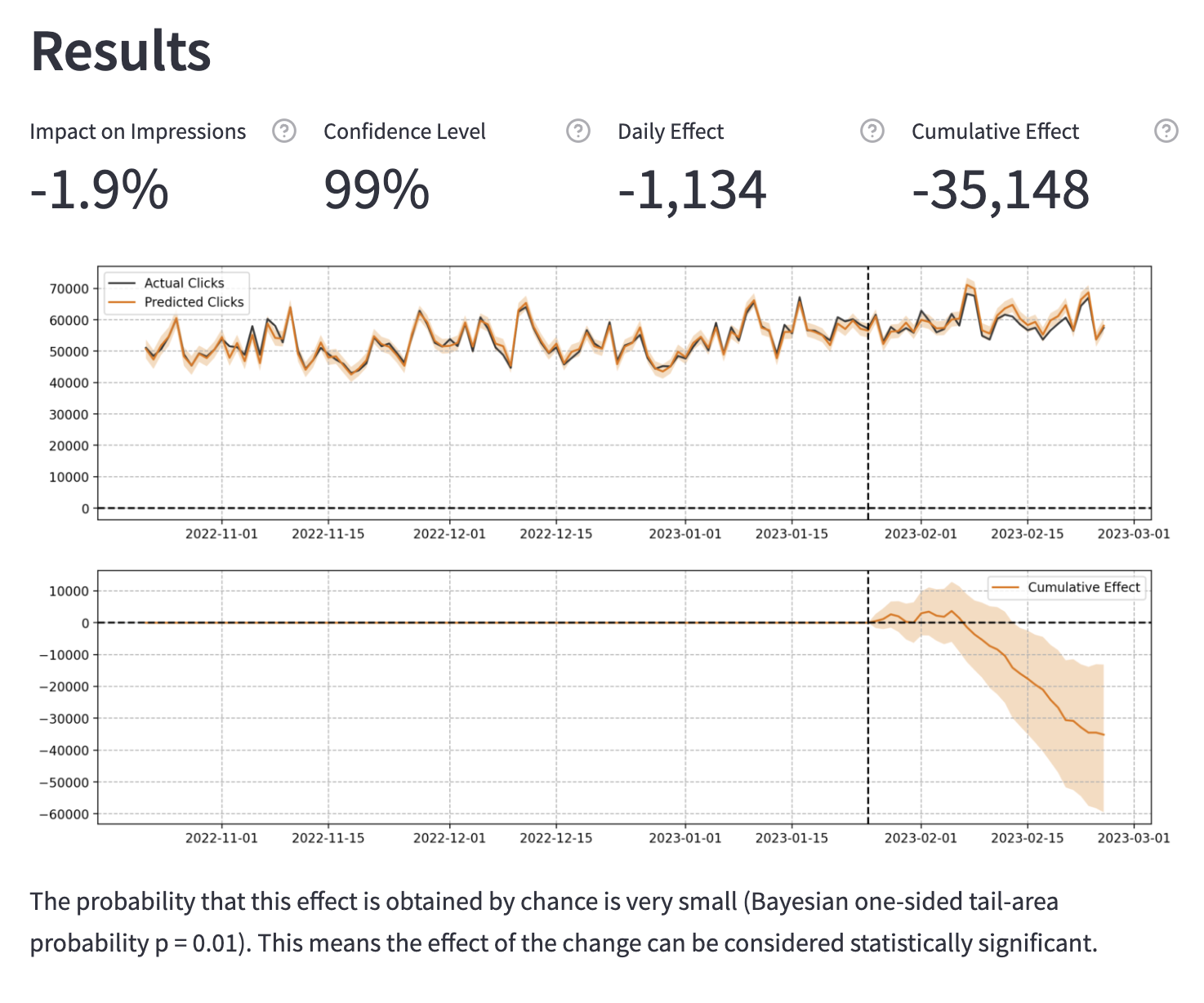
While the results of this experiment demonstrate the potential drawbacks of front-loading the brand name, it is essential to consider the unique context and audience preferences of each website when optimizing title tags for SEO performance.

